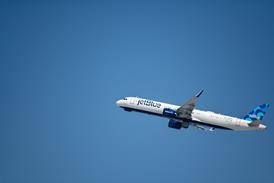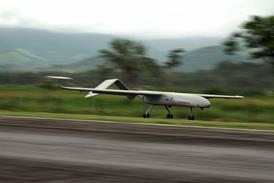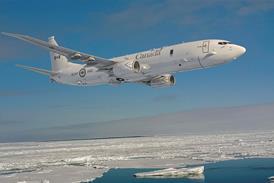The three bidding teams for the US Navy's $2 billion Broad Area Maritime Surveillance (BAMS) contract have revealed widely different approaches in both airframe and sensor choices.
In addition to a selection of airframes that included an unmanned turboprop, an unmanned turbojet and optionally manned business jet, the navy must also select between two mechanically scanned arrays or an active sensor with mechanical steering.
The three teams led by Boeing, Lockheed Martin and Northrop Grumman submitted proposals on 3 May and are awaiting initial evaluation notices from the navy. Contract award is expected to occur in September or October, with initial operational capability to be delivered by fiscal year 2013.
Boeing has selected an optionally manned Gulfstream G550 business jet for its bid. Although Boeing officials declined to identify the Raytheon-supplied mission suite, Flight has learned that team is adapting the Raytheon APY-10 radar that is currently in development for the P-8A fleet, which is scheduled to enter operational service in late FY2012 or FY2013. That sensor is itself adapted from the APS-137 radar installed on the current fleet of P-3Cs, but made "substantially smaller and lighter" for the P-8A and the G550.
Raytheon considers its long association with the navy's maritime surveillance mission as a credit to its proposal, as it has already confronted the issues presented by maritime-unique clutter, said Mike Proch, vice-president of precision, attack and surveillance systems. The company also has benefited from its role in the navy's ongoing Global Hawk Maritime Demonstration programme, which has led to improvements in radar processing algorithms from high altitudes.
Boeing declines to answer questions about how many G550s would be needed to meet the navy's requirement for time on station.
Meanwhile, Lockheed is offering the General Atomics Mariner unmanned aerial system, which is a Predator B airframe modified with conformal fuel tanks and a larger wing from the related Altair UAS programme.
"We believe that the risk [of installing a new wing] is minimal and it gives us a fully functional wing" to meet the BAMS requirements, said Richard Kirtland, vice-president for Lockheed's maritime surveillance enterprise.
Lockheed plans to install a derivative of the Israel Aerospace Industries Elta EL/M-2022 radar that is already operational with the US Coast Guard's CN-235 maritime patrol aircraft. Kirtland confirms that Lockheed can meet the navy's time on station requirement with 94% reliability using four aircraft.
Meanwhile, Northrop's approach to the competition is made distinctive by the company's apparent decision to rely on its own product line rather than on subcontractors for its mission systems. The most notable result is the selection of the Multi-Function Active Sensor for the RQ-4N Global Hawk's radar. The MFAS has an active radar with 360e_SDgr coverage. It is derived from an Office of Naval Research project and has been flying aboard the Gulfstream GII testbed.
Source: Flight International























